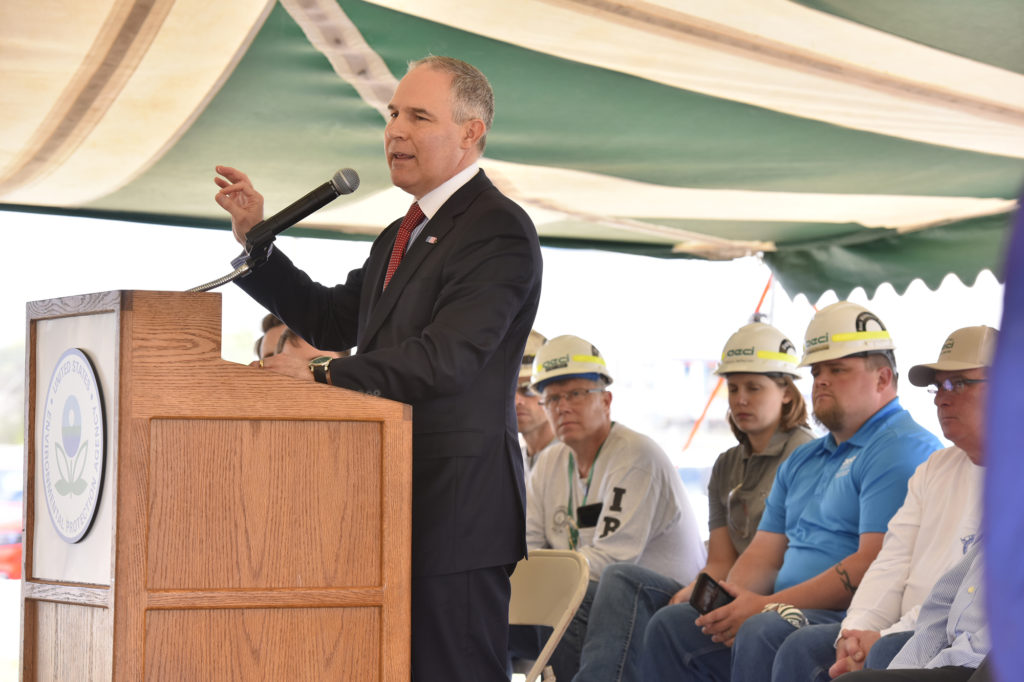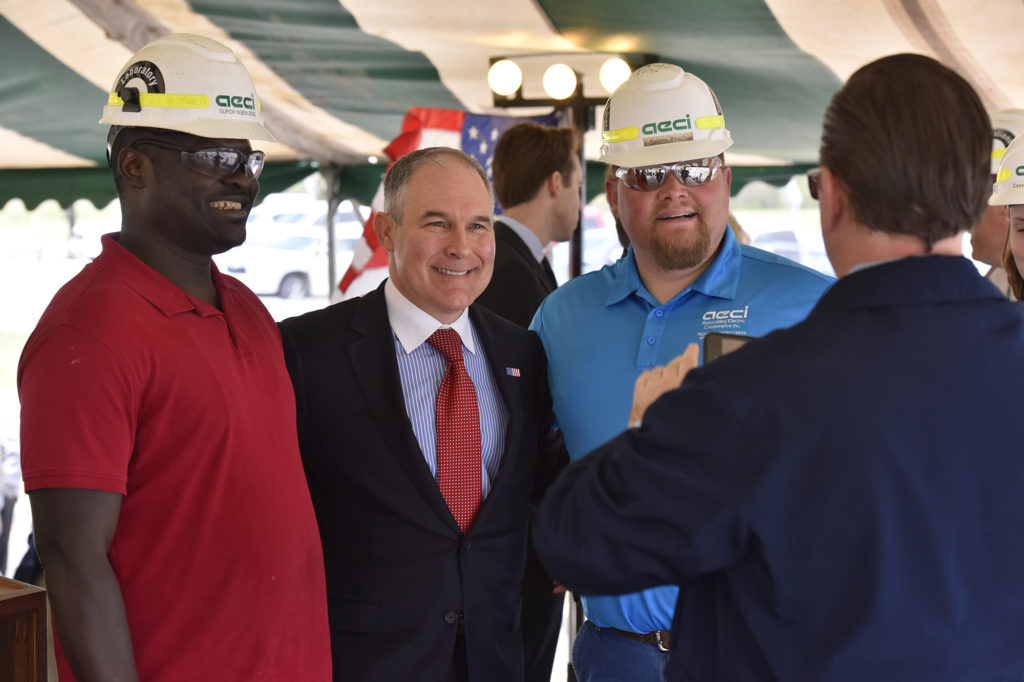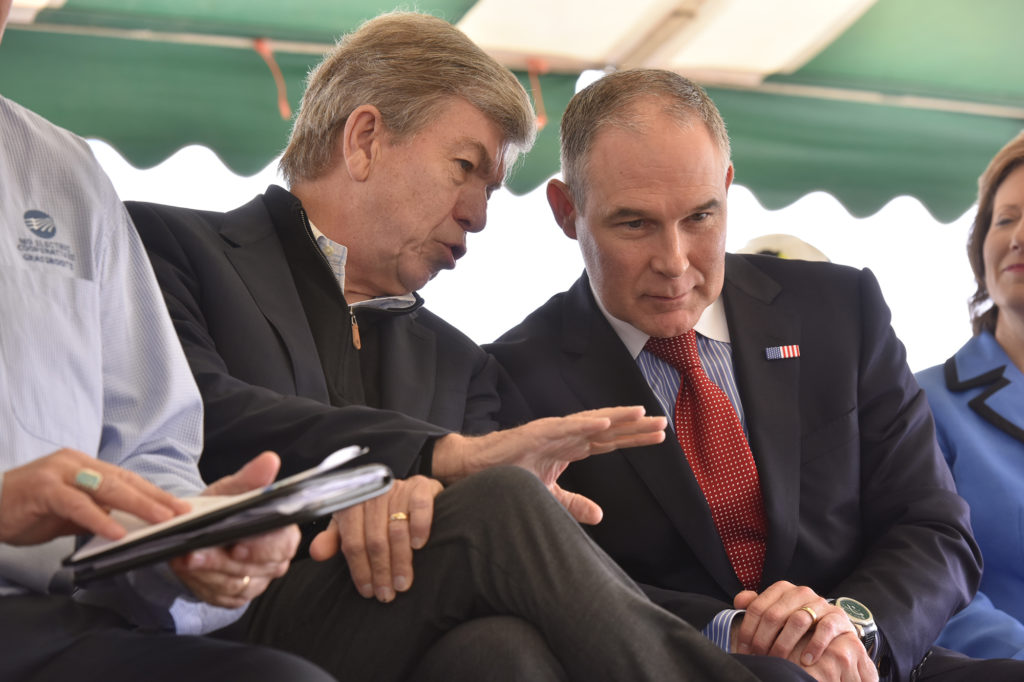
Environmental Protection Agency (EPA) Administrator Scott Pruitt recently visited Associated Electric Cooperative’s Thomas Hill Energy Center in Clifton Hill, Missouri, where he answered questions during an interview with NRECA staff writer Derrill Holly. An excerpted version follows. Read the full interview in the July issue of RE Magazine.
Q: What do you hope to accomplish with your “Back to Basics” regulatory agenda?
A: Getting the EPA back into core areas of regulation and making sure that it stays within its lane. The EPA has a very important role with respect to air quality issues across state lines, water quality issues that go across state lines, Superfund site remediation, obviously water infrastructure, ensuring safe drinking water across the country and partnering with states in that regard.
Many of those areas have been underserved and underemphasized for a number of years. And so this “Back to Basics” agenda—or this EPA originalism, as I’ve called it—is really making sure that the EPA focuses on the areas that are core, investing resources and time to achieve good outcomes.
Q: How can stakeholders, including electric cooperatives and their member-owners, expect to see this agenda reflected in energy policy?
A: What’s key with energy policy is fuel diversity. When you have utilities, whether it’s rural co-ops or investor-owned utilities, you want to make sure that they have options; that there is flexibility whether it’s using coal or natural gas or renewables, in the generation of electricity.
The EPA should not be in the business of picking winners and losers, of putting the thumb on the scale on behalf of any of those particular energy sources. It should simply pass regulations that provide fairness and equity and allow utilities to make decisions based upon stability, cost and security to the consumers that they serve.

Q: How can folks in rural America better make their concerns heard in Washington, D.C.?
A: This last election was all about that. The president and his cabinet, [including] placement of me at the EPA, indicate that their voices were heard. When you look across the country, the concern about where we were heading prior to November 8th, about how the EPA was using its regulatory power in a way to pick winners and losers, and not stay within its lane and focusing on core priorities.
Even now as we’re making these decisions, and rolling back regulations, that doesn’t mean an absence of regulation. In Washington, D.C., at times, those on the environmental left think just because you’re rolling back regulations that somehow you have this vast array of our economy that has no regulation at all. That’s just craziness. We have states, as you know, that have regulatory bodies that have partnered with the EPA for decades to improve air quality to the tune of 65 percent since 1980. That partnership needs to be restored and focused upon in the years ahead.

Q: You had a lot of experience with the Clean Power Plan in Oklahoma. What is the role of states within the EPA and the federal agencies in determining their energy and environmental policies under this administration?
A: Under this administration, that partnership matters. When you go back and look at the inception of the Clean Air Act, the inception of the Clean Water Act, environmental laws that were passed in the 1970s, Congress was very intentional about making sure that states were primary or an active partner with the EPA [in implementing] regulations. It was only this past administration that displaced that. As opposed to working in partnership, they worked in opposition. They worked as adversaries.
President Bush I, President Clinton, and President Bush II—three administrations—issued five federal implementation plans under the Clean Air Act. President Obama issued 56. And those federal plans that President Obama pushed out on the states were coercive. They basically were a sign that says, “We know best, get out of the way, states; we’re going to force this upon you.” That’s not what the statutes say. That’s not what the Constitution provides. That’s not what actually produces a good outcome.
So the president and the EPA under our leadership now are focused upon restoring that confidence and that trust to say we can do better than that. We know that we care, and the states care, about the water they drink and the air that they breathe, and we’re going to partner together.
Read the July issue of RE Magazine for the full interview.
Derrill Holly is a staff writer for NRECA.